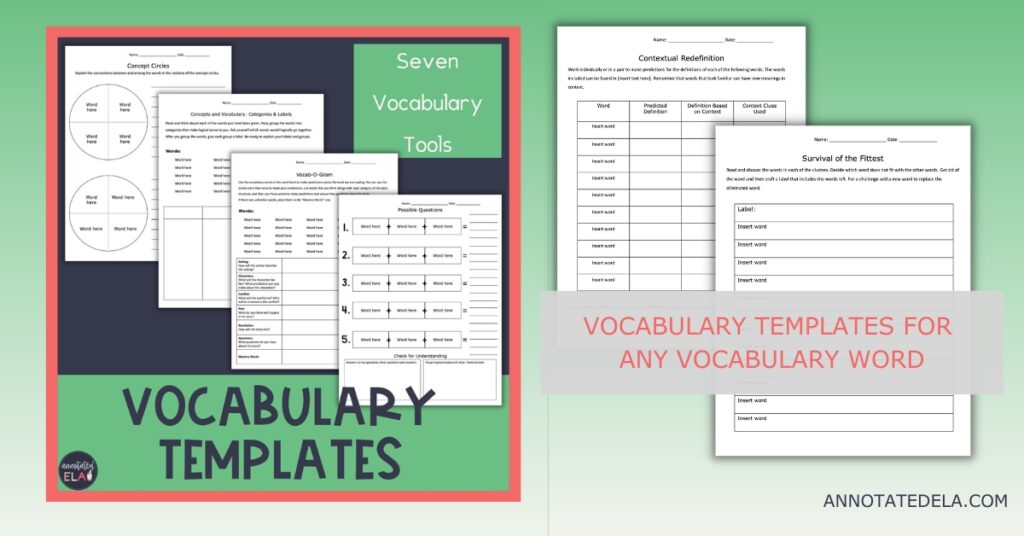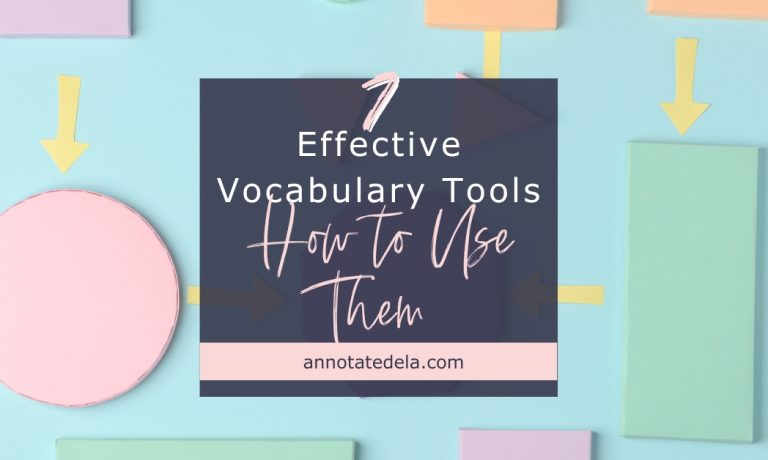Seven Vocabulary Tools
Word Walls
Concept Circles
Possible Questions
Vocab-O-Gram
Contextual Redefinition
Word Sorts
Survival of the Fittest
Are you looking for vocabulary tools? Are you feeling stuck when it comes to vocabulary instruction? Maybe you’re a vocabulary rockstar and you’re looking for something different to engage students.
Whatever your vocabulary status, these vocabulary tools are a great addition to your literacy toolbox.
Interested in ready-made vocabulary templates? Grab the Vocabulary Template resource and use the activities with any vocabulary word.
Let’s get to the vocabulary tools.
*The article contains affiliate links. I may receive a small commission from your purchase.
Vocabulary Tools #1: Word Wall
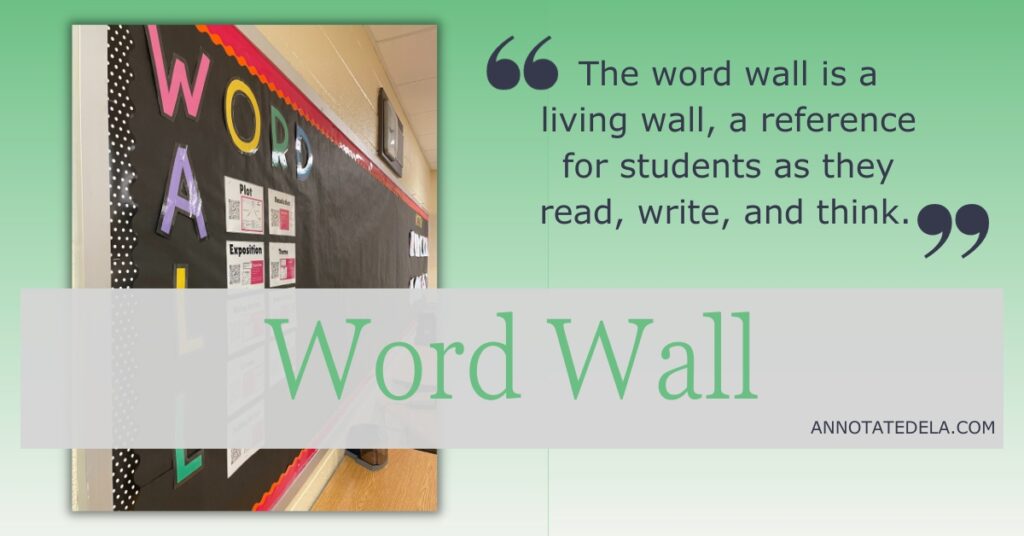
Hear me out. While Word Walls are not a revolutionary idea, they are effective.
What is a Word Wall?
Inside Words by Janet Allen* defines a word wall as “A Word Wall is a displayed collection of words that support an ongoing teaching and learning in the classroom.”
Word Walls can be composed of words that are used often in the classroom, this would be a “high utility” word wall.
Or a word wall could be a topical word wall; where the words are related to a theme, text, or unit of study.
High Utility Word Wall
A high utility word wall would be where the words are added as they are encountered and learned through shared reading and learning of the individual words.
The words on a high utility word wall should be words students are expected to use in their speaking and writing.
Topical Word Wall
A topical word wall contains words students will encounter during the unit of study.
The words can go up as they are encountered, or can be displayed at the beginning of the unit and referred to as they are encountered.
Whether it is a high utility or topical word wall, refer back to the words throughout the unit or year. Word walls also support spelling and recall.
The word wall is a living wall, a reference for students as they read, write, and think.
Vocabulary Tools #2: Concept Circles
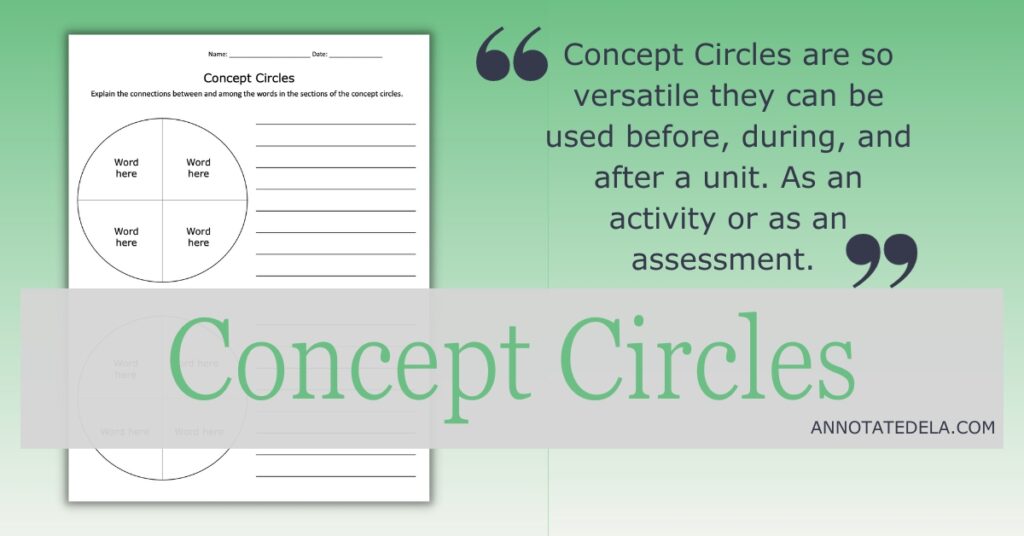
Concept circles are simple, effective, and versatile.
What is a Concept Circle?
A Concept Circle is a circle with words placed in sections of the circle.
There are variations to the concept circle, but the structure is generally the same. A circle with four sections and each section contains a word or a phrase.
Concept Circles can be used for instructional and assessment purposes.
How do Concept Circles Work as Vocabulary Tools?
At the basic level a Concept Circle provides students the opportunity to categorize words and make connections among the words in the circle.
Concept Circles would be used when teachers want students to engage in conceptual thinking.
There are several ways teachers can ask students to use Concept Circles.
- Teachers can place the word or phrase in each section and ask students to write about or discuss the connections they can make among the words or phrases. Why are these words together?
- Another way to use Concept Circles is to place a word or phrase in three of the sections and ask students to add a word to the fourth section that would fit. Then have the student explain why that word fits.
- A third way teachers can use Concept Circles is to ask students to pick four words from the unit of study and use the words to explain what they have learned during the unit.
- A final way to use Concept Circles is to ask students to color or highlight the words that go together or the word that doesn’t fit. Then students can write about or discuss the attributes that make the words fit or not fit.
Concept Circles are so versatile they can be used before, during, and after a unit. As an activity or as an assessment.
Vocabulary Tools #3: Possible Questions
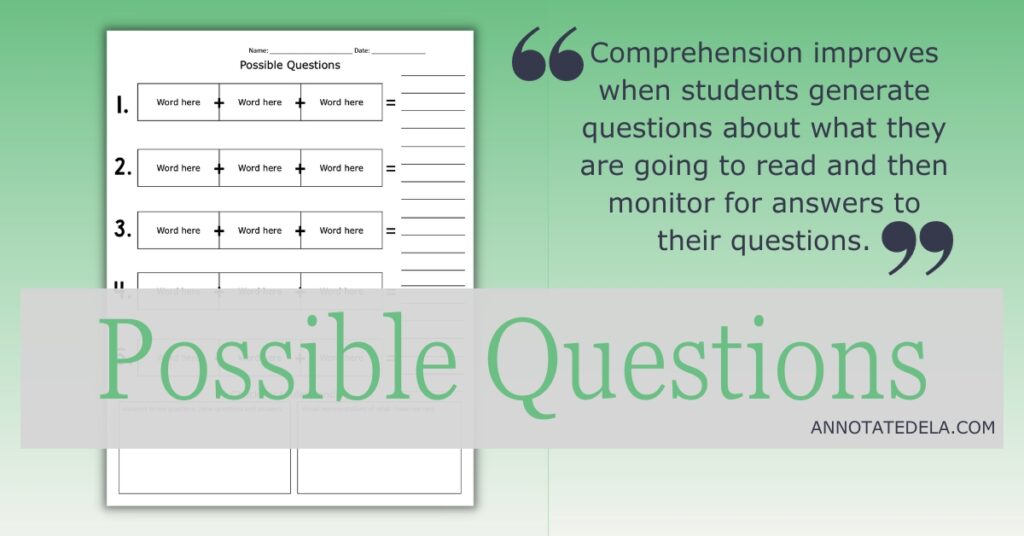
In Janet Allen’s book, Inside Words* she states, “I designed Possible Questions along two lines of research: the role of student-generated questions to support comprehension and the role of prediction in anticipating content.”
This is a powerful vocabulary tool and reading tool.
What is Possible Questions?
Possible Questions asks students to use content-specific vocabulary from an upcoming text to predict possible questions they think the text will answer.
How do Possible Questions Work?
- The teacher chooses content-specific words from an upcoming text or unit students will encounter during their study.
- The words that are chosen should be significant to the understanding of the text or unit.
- The teacher groups words into categories of two or three, the words should logically go together.
- Ask students, individually, in pairs, or groups, to generate questions using the clustered words.
- The questions should be questions the students think the text will answer.
- During and after the reading students monitor and check for understanding.
- If their questions are answered, students write the answers in the space provided.
- If questions weren’t answered students need to revise the questions using the target words and answer the newly drafted questions.
- A final activity can be to have students visually represent what they have learned.
Possible questions would be used to build background knowledge before starting a unit or reading a text.
Comprehension improves when students generate questions about what they are going to read and then monitor for answers to their questions.
It also provides students with the opportunity to focus on the most important parts of the reading.
Vocabulary Tools #4: Vocab-O-Gram

This is a vocabulary tool for ELA classes.
What is Vocab-O-Gram?
A Vocab-O-Gram is a graphic organizer that asks students to predict what will happen in a story using vocabulary words from the text with the categories of story elements.
The organizer contains story elements: setting, character, conflict, plot, and resolution.
How does Vocab-O-Gram Work as Vocabulary Tools?
- The teacher provides students with a list of vocabulary words from the story that are significant to the story and the plot.
- Then discuss the words with the students and then ask them to place the words where they think the author will use the words: setting character, conflict, plot, and resolution.
- Students make predictions about the story based on the vocabulary words and where they placed the words on the organizer.
- Students should also craft questions about the story using the vocabulary words.
- If words are unfamiliar to students, there is a “Mystery Word” category.
- After reading students can revisit the Vocab-O-Gram to answer the questions and check predictions.
- This tool can be used to help students monitor comprehension and scaffold writing about the story.
Vocabulary Tools #5: Contextual Redefinition
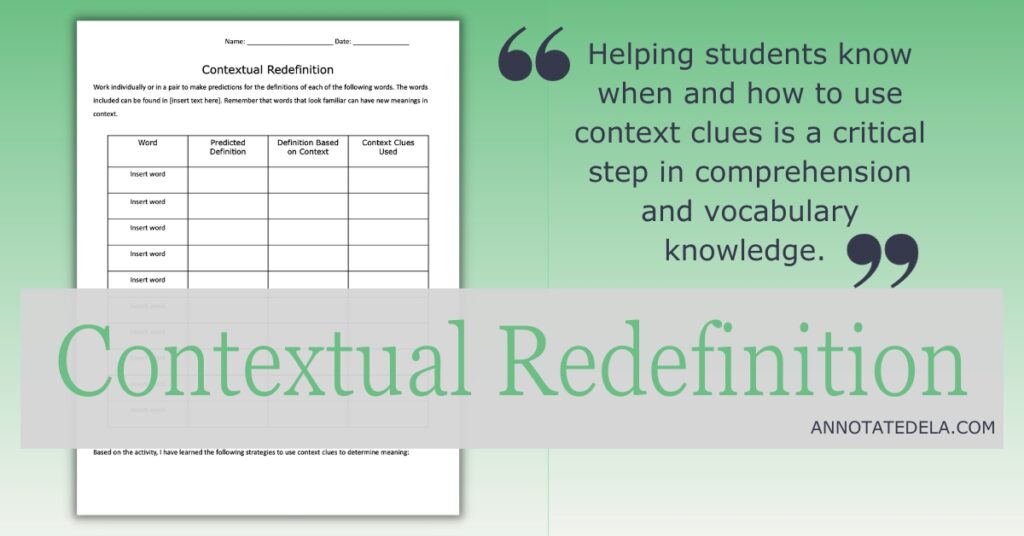
Do your students struggle to use context clues? Using context clues alone is often unreliable for determining the meaning of a word. But with contextual redefinition, students have a way to use context clues in a meaningful way.
What is Contextual Redefinition?
Contextual redefinition helps students understand the importance of context clues and how they can improve vocabulary comprehension.
It is also a way to introduce students to new vocabulary and use context clues to predict and verify meaning.
Helping students know when and how to use context clues is critical to comprehension and vocabulary knowledge.
How does Contextual Redefinition Work as Vocabulary Tools?
- The teacher provides students with about ten words. The words are in isolation, with no context.
- Students will make predictions about the meanings of the words on the list using their background knowledge and knowledge of word parts.
- Then the teacher provides the context for each of the words to determine context clues that are relevant to the meaning of the vocabulary word.
- Students will identify the context clues used and then make a prediction using the context clue and information from their first prediction.
- At the end, students will reflect on the strategies they have used and learned to identify context clues and meanings of unknown words.
Contextual redefinition is a vocabulary tool that helps students practice using context clues.
Vocabulary Tools #6: Word Sort
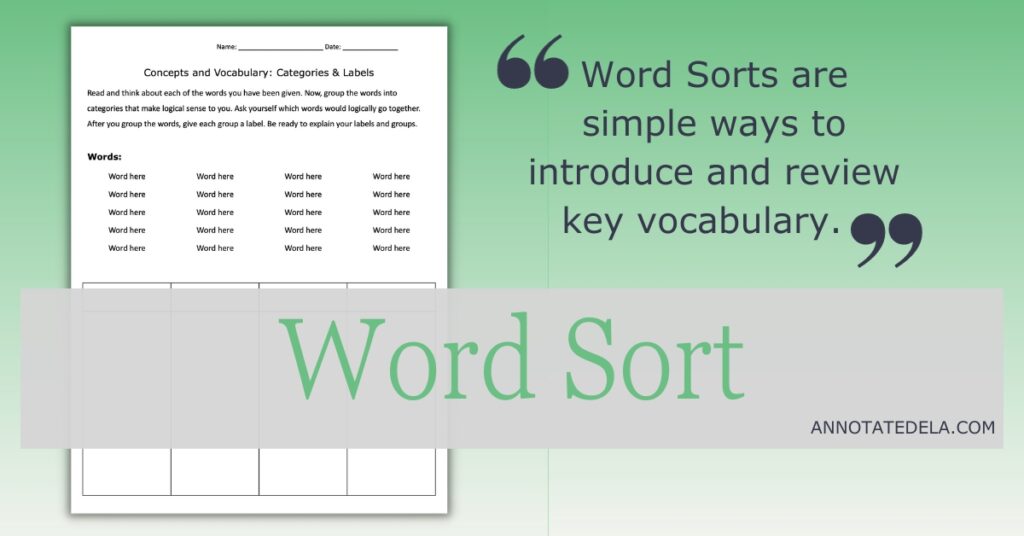
What makes a Word Sort different from List-Group-Label?
List-Group-Label has the students listing the words, with a Word Sort, the teacher provides the list.
What is a Word Sort and How does it Work?
- Students are asked to sort words into categories, where the words have common elements.
- There are two types of Word Sorts. A closed Word Sort and an open Word Sort.
Closed Word Sort
A closed Word Sort is when the teacher provides a word bank and the categories. Students are only asked to sort the words into the predetermined categories.
Open Word Sort
An open Word Sort is when the teacher provides a word bank, but does not provide the category labels. Students are asked to sort the words into categories and determine the categories.
Why and When to Use Word Sorts as Vocabulary Tools?
Words Sorts can be done as a pre-reading activity or a post-reading assessment.
Using a Word Sort as a pre-reading activity will introduce students to words, concepts, and topics they will encounter while reading and throughout the unit of study.
Before reading it will provide the teacher with an initial assessment of the student’s knowledge of the content.
As students justify the categories, the teacher can lead and guide the discussion so the basic information related to the words is recorded. It is building the background knowledge.
When Word Sorts are completed after reading it can be a way to review and assess a student’s knowledge.
A Word Sort can be done before and then revisited after reading to clarify and revise meaning.
Word Sorts are simple ways to introduce and review key vocabulary.
Vocabulary Tools #7: Survival of the Fittest

According to Janet Allen in the book, Inside Words*, “Survival of the Fittest is based on three strands of research that connect effective vocabulary instruction to increased learning: Students need multiple exposures to the word (Stahl and Fairbanks 1986); exposures should be in varied context (McKeown, et al. 1985); and instruction should establish connections among instructed items (Nagy 1988).
What is Survival of the Fittest and How does it Work?
Survival of Fittest is a vocabulary tool that asks students to determine which word does not “fit” in the cluster of words.
The words are related to the unit or topic of study.
The students determine which word does not belong with the cluster of words.
The student then creates a label or category for the remaining words.
Teachers can ask students to complete an additional task by having students think of a word that could replace the deleted word.
Why and When to Use Survival of the Fittest
Survival of the Fittest is a good review activity because this would mean students have had multiple exposures to the word and other student’s knowledge of the words before applying it in an assessment.
The vocabulary tool can also be used as an assessment tool for individuals or groups of students.
There are no limits to how to expose students to vocabulary words and what tools to use to make the words stick. I hope these seven vocabulary tools have given you some ideas to spark the love of words in the classroom. If you want templates that are ready to use, grab the Vocabulary Template resource.
